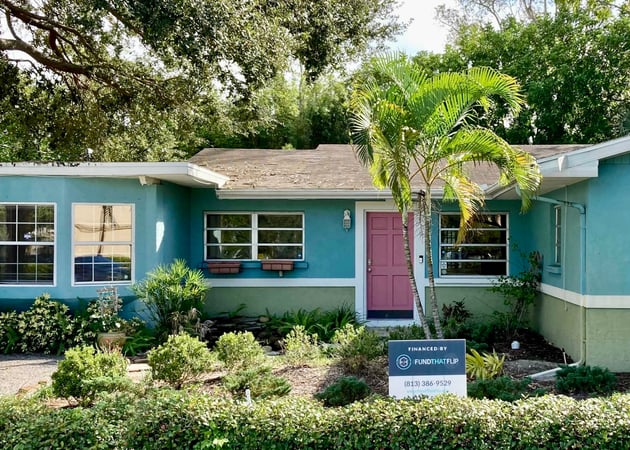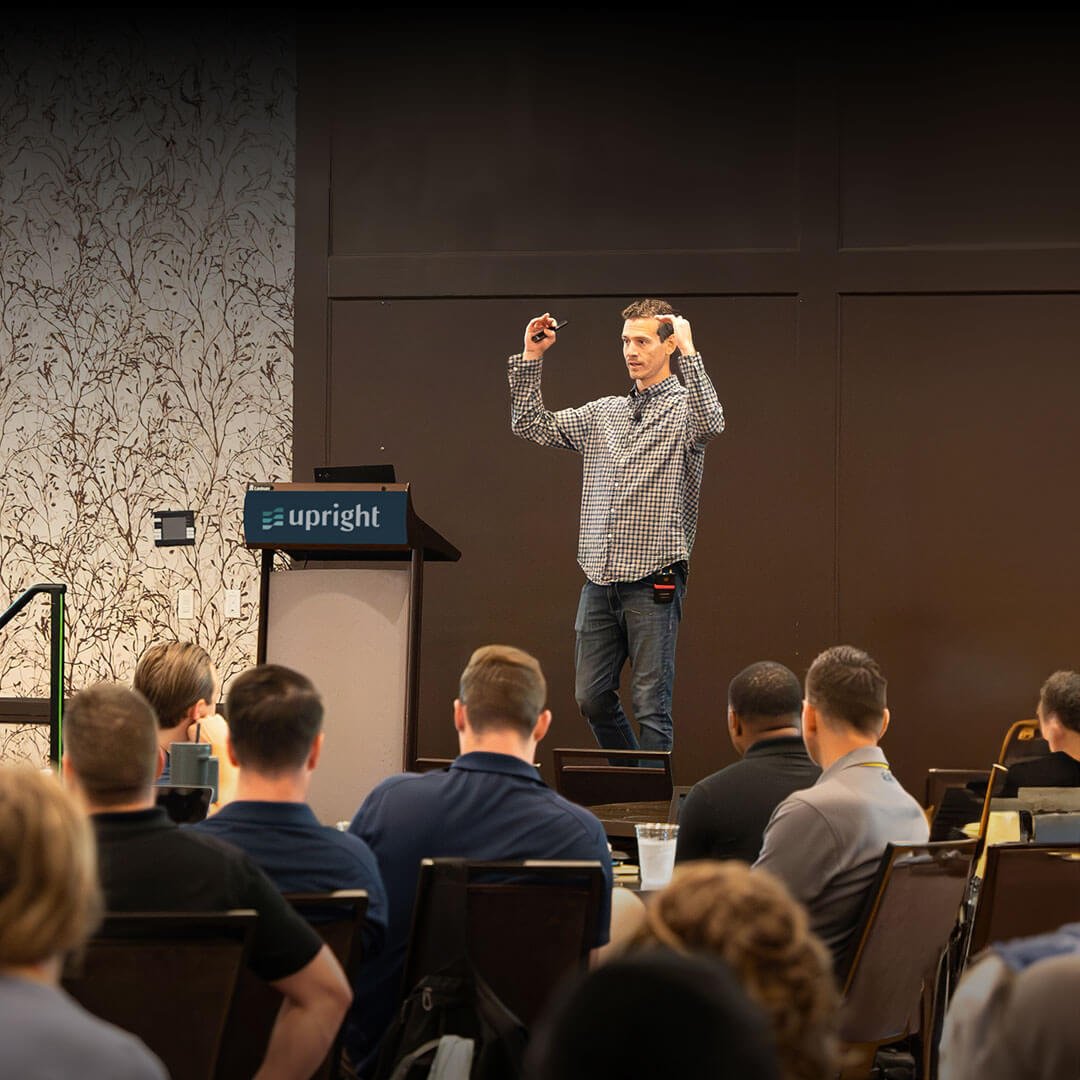We hate to be the ones to tell you, but a multi-exit strategy is not a thing.
As a real estate entrepreneur, when you find a deal and are considering the cost of repairs and financing, you should also be determining how you’re going to exit your loan on the front end of the transaction.
As an aside, the photos in this post are not meant to be representative of the exit strategy, rather, just an example of some of the projects Fund That Flip has financed in the past.
First, what is an exit strategy in real estate?
An exit strategy is the plan you, the real estate entrepreneur, have in place to successfully remove yourself from the deal while recouping your capital and ideally making a profit for the next one. In other words, it’s how you’re going to sell, rent, or otherwise turn the property while making the most profit from those actions.
Not only does an exit strategy help with acquiring financing and your lender’s subsequent underwriting process (some exit strategies involve more risk and lenders might not want to finance them), but it also impacts your taxes and your planned ROI. For example, the rehab work and expenses for a residential property you’re planning to sell vs. rent could be quite different, with very different outcomes. You should understand how you’re going to profit from a deal before you spend any money on the property.
Types of exit strategies:
1. Fix and Flip
Fix and flip is the most popular exit strategy for real estate entrepreneurs, unsurprisingly. This strategy involves purchasing a property, ideally below market value — a deal — and increasing the property’s value with repairs and upgrades with the sole intention of selling it for profit.
The fix and flip exit strategy generally offers the greatest ROI. Fix and flip is also a strategy of speed: The faster the property can be rehabbed and sold, the faster profits are realized to put toward the next deal.
A fix-and-flip in Charlotte, NC.
2. Buy and Hold
Just like the fix and flip strategy, buy and hold starts by purchasing a property that needs improvements, ideally below market value. However, after the property is repaired and rehabbed, the real estate entrepreneur offers it for rent instead of for purchase.
This exit strategy provides the redeveloper with monthly cash flow from rental income, ideally enough to cover the monthly loan payments from the purchase and rehab of the property. If the property is “held” and rented long enough, it should eventually pay off the loan and then generate passive income for the redeveloper. Additionally, if the property is eventually sold, that’s additional profit for the redeveloper.
2.5 BRRRR
An off-shoot of the buy-and-hold exit strategy that is not necessarily an exit is BRRRR. This popular investing strategy acronym stands for:
- Buy: Purchase a distressed or aged residential property.
- Rehab: Generally rehab, repair, and upgrade to ensure the property is up to code and desirable for the rental market.
- Rent: Find tenants!
- Refinance: Utilize cash-out refinance to pay off the original loan.
- Repeat: Use the profit/cash difference from the refi to put a down payment on the next deal.
As with the buy and hold exit strategy, with BRRRR the property is rehabbed and held to generate cash flow from the monthly rental income, but after a certain period of time (depending on rental seasoning requirements of the loan), the redeveloper can utilize a cash-out refinance and reinvest in another property while enjoying the benefits of a long-term loan/rental income with very little or none of their money in the loan.
Interior of a Fund That Flip-financed project in Philadelphia, PA
3. Rent-to-Own
In this exit strategy, the redeveloper offers the rehabbed property as a rental with an option for the tenant to purchase the home at a later date. The redeveloper and tenant will agree on a rental period, and when that period ends the tenant will have the opportunity to purchase the house. After the rental period and the tenant has agreed to purchase the home, the monthly payments go toward the purchase rather than rent. This is similar to paying the monthly mortgage, except the payments are going to the redeveloper/owner of the property instead of a lender or bank.
Home in Atlanta, GA suburbs, from a Fund That Flip client.
4. Wholesale
In a wholesale exit strategy, a distressed or aged property that’s below market value is put under contract — then the contract is assigned to another redeveloper, builder, or investor at a higher price than originally paid. There’s no intent or plan to rehab, repair, or renovate the property, and there are no costs to carry with a loan.
This is generally considered a low-risk-low-reward investment, and experts consider it one of the simplest forms of property investment if done correctly. You still need to have a good understanding of the market the property is in and be able to find someone to purchase it.
Historic home rehabbed in Columbus, OH.
5. Seller Financing
The seller financing exit strategy lets the redeveloper or owner of the property directly sell the flipped home, with the redeveloper financing the deal and acting as a lender for the buyer. The redeveloper/owner and buyer will draw up a promissory note outlining the terms, including interest rate and schedule of payments, as well as consequences of default. There’s no underwriting, bank loan officer, or legal department, so seller financing can be a much quicker way to sell — however, the onus is completely on you, the redeveloper, to put all of this together.
Rehabbed cape cod in Richmond, VA.
6. Rehabbing + Wholesaling = Prehabbing
The “prehabbing” exit strategy is a mix of rehabbing and wholesaling. In a prehab, minimal work is done to a distressed or aged property to quickly bring it up to code or selling quality — which also makes it a great option for real estate entrepreneurs looking for a DIY project without the full commitment of a fix-and-flip.
Generally, the upgrades on a prehab should not be expensive, difficult, or require hiring a professional. The upgrades are usually cosmetic in nature, including fresh interior and exterior paint or replacing the carpet — but the extensiveness of the upgrades is entirely up to you and what you plan to get from the property. This is why planning an exit strategy is key.
 Home in Tampa Bay, FL area while it’s being renovated by a Fund That Flip client.
Home in Tampa Bay, FL area while it’s being renovated by a Fund That Flip client.
7. Bank-Owned or REO
This is not an option you should plan for, as it means your investment property has been foreclosed upon and seized by the lender. You should plan to avoid a bank-owned or foreclosure auction exit.
A bank-owned or real-estate owned (REO) property is a property that has been foreclosed upon due to default and has been re-possessed by the property’s financing source, such as a bank or a direct lender. The lender will then sell the property under market value to a new buyer, usually at auction.
It’s expensive for lenders to hold and maintain foreclosed properties — and not what they’re in business to do — so they try to sell the property as soon as possible by removing liens and debts from the property.
On the flipside, as a real estate entrepreneur, it’s worth your time to learn how the real estate auction process works as it can be a great way to source new deals.
8. Inheritance
Many people invest in real estate because it gives them something to leave to their family upon their death. Property and land can be passed from the investor to their heirs via a trust and will.
If this is an exit strategy you’d like to pursue, hire an attorney who can detail what your real estate investments are, what will happen to them, and who will inherit them. When your heirs inherit the property the value will be adjusted to the current market value — this is more beneficial than selling the property before passing as the market value may appreciate and the heir will avoid any capital gains taxes if they decide to sell the property after inheriting it.
Fix-and-flip financed by Fund That Flip in historic Charlotte, NC.
9. Traditional
The traditional exit strategy means you purchase a property and then work with a real estate agent to help you sell it for a higher price. This is assuming there is not a complete rehab on the house. Many real estate entrepreneurs who utilize the fix-and-flip strategy or are involved in new construction still work with a real estate agent to sell their properties. It’s just one less thing you have to deal with.
Modern home rehab in Columbus, OH
Are you eyeing a deal and looking for financing? Apply now for a loan commitment within 24 hours — get pre-approved up to $5M so you can make a winning bid on your next project.
Sources:
longhorninvestments.com
fortunebuilders.com
IMN BTR, Land, and Homebuilding Forum 2022





